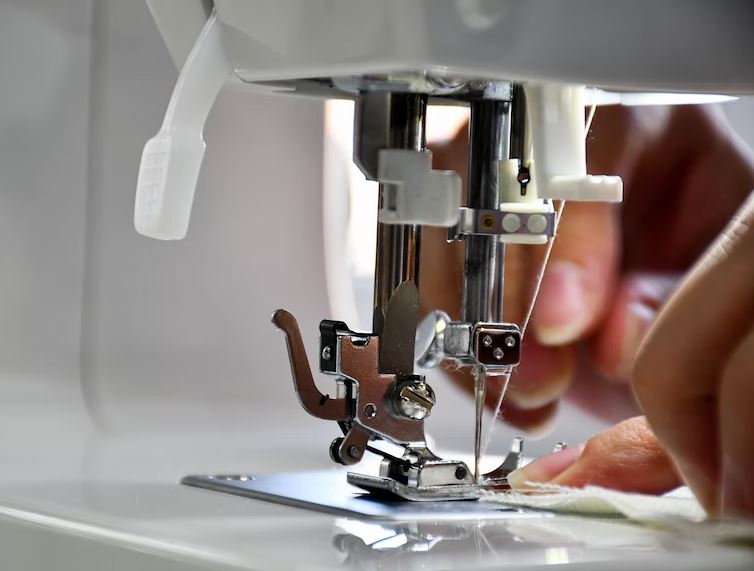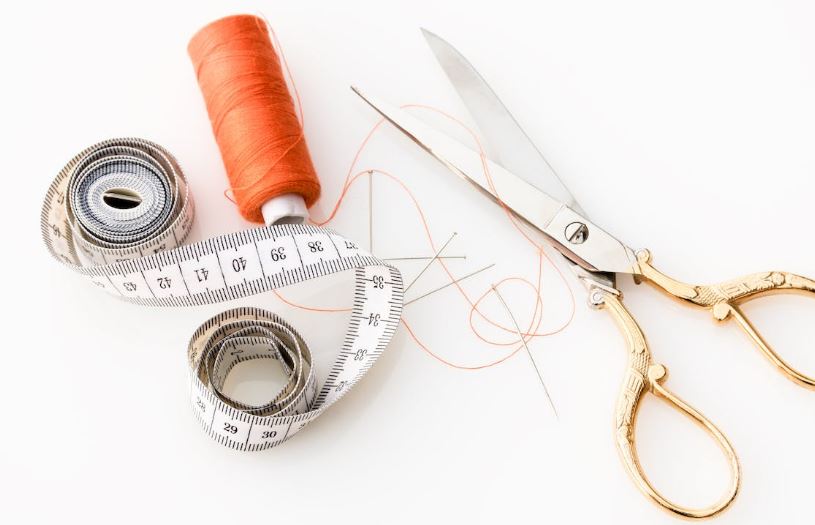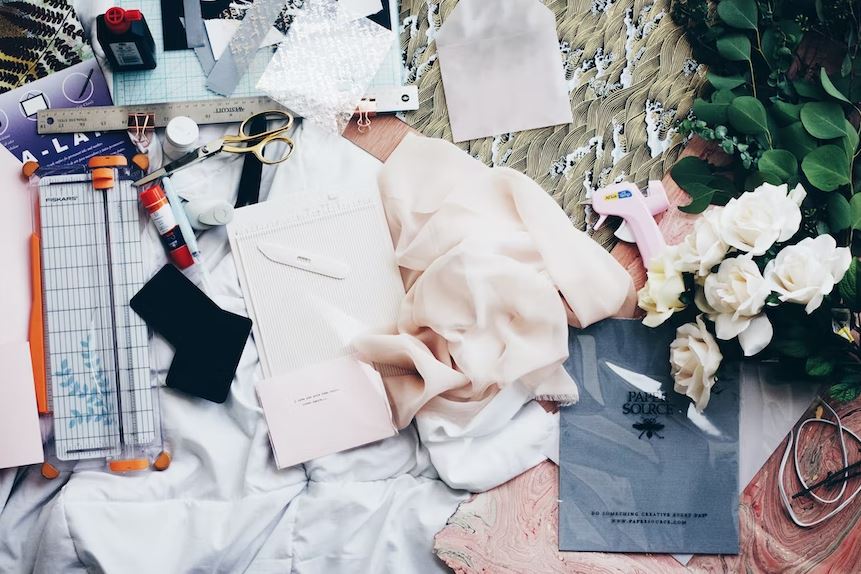If you’re incredibly skilled in sewing, making beautiful clothing patterns, repairing damaged apparel, doing alterations, and other tailoring tasks, you may want to consider transforming it into an at-home business. While sewing businesses took a nosedive in recent years, the demand has never diminished.
Starting an at-home sewing business can be the best business opportunity for you, attracting various types of customers, meeting different needs, and keeping dozens of regular clients whose referrals can further expand your business reach.
What’s even great is that the list of sewing projects available is limitless ranging from clothing repair, embroidery, dressmaking, and costume design, to special occasion clothing. As such, it’s easier to make it a viable business if you have the skills.
Of course, don’t forget about the necessary equipment you need for the business. At a minimal expense to purchase these tools, you can begin creating clothing products and servicing your client. If this is something you’re interested in, keep reading as we’ll discover the different types of equipment you need to get you started with your at-home sewing business.
1. Sewing Machine
A sewing machine is the most essential tool in starting your sewing projects. With that, it’s also the hardest decision to make for your business. It’s a challenge, especially for newbies, to find an affordable and suitable standard sewing machine, given that any mistake can spell the success or failure of your endeavor. Some things you need to consider when buying one include the basic features, stitch options, weight and size, service and warranty, and the total cost.
Often, you can find a vintage machine at a thrift store if you’re really tight on budget. If you have money to spend, you can follow most people who purchase theirs online. Otherwise, to be sure, you can also go to shops to see, scrutinize, and test the equipment personally and properly. If you want to be sure, you can opt for trusted brands instead, such as Juki, Usha, Singer, Janome, Bernina, Brother, and Jaguar, which have been known to offer high-quality sewing machines.
2. Measuring Tape
A tape measure is a tool that helps you achieve the utmost accuracy in sewing. It’s a soft, flexible thin strip or ribbon made of fiberglass or reinforced fiberglass. It has linear-measurement markings, showing 60 inches on one side and 150 centimeters on the other. Meanwhile, a tape measure is also coated to avoid it from stretching quickly when used, while their ends also feature metal tips to prevent them from fraying. After using it, you can easily fold or roll it for storage. It’s a staple that you can do without in your at-home sewing business.
3. Needles
Sewing is also impossible without the presence of needles. If you have a specific item that needs to be done with hand stitches, you need hand sewing needles for the job. Just be mindful that you will not most likely survive doing hand stitching alone, especially if you want to commercialize your at-home business and earn revenue. You need to use a sewing machine to speed up the process, which requires you to purchase a different set of sewing machine needles.
Note that there are different types of sewing machines, too. You have your standard sewing machine, a serger or overlocker, a leather sewing machine, and an embroidery machine, which also needs its own kinds of needles. So, be sure to check what you need, depending on the task at hand.
Moreover, you should also keep different numbers of needles, though 14 and 16 are the must-buys. Having enough stock of different needles ensures that you won’t experience any delay should any needle break or become dull during the sewing process.
4. Threads
Threads are another requirement for a sewing business. There is a variety of threads available, such as quilting threads, metallic threads, upholstery threads, embroidery threads, denim wear threads, common stitching threads, invisible threads, tailor’s threads, and sewing machine threads. Like with needles, it’s vital to get all sorts at hand so that you can simply grab them when needed and avoid unnecessary trips to the sewing shop again and again during a project. Moreover, be sure to have them in different colors so you’ll have ones to match your fabrics and patterns.
5. Fabric
You also need good-quality fabric to start your sewing projects. There are many types of textiles available, but they’re generally categorized under natural and synthetic textiles. The former include silk, cotton, denim, hemp, leather, flannel, velvet, wool, and linen, while the latter include polyester, nylon, acrylic, acetate, polar fleece, spandex, and rayon.
There are instances that clothes would require both, though some fabrics are more favored than others. Still, the type of fabric heavily depends on the project you’re working on, always select the right material to get the best results, drape, and fit.
6. Tailor’s Chalk
Tailor’s chalk is the most preferred marking tool in the sewing world. It’s no surprise as it’s inexpensive, easy to use, works on most types of materials, and easy to remove. By using one, you can mark, measure, and prepare your fabric prior to cutting it with so much ease. However, don’t be restrained as you can also use other tools. If you’re comfortable, you can use tracing paper and a tracing wheel. Otherwise, you can utilize specially designed fabric markers. It’s all up to you! The goal is to always have something to mark your precious patterns with.
7. Dressmaker’s Shears
Expect to do a lot of cutting, so be prepared by having a reliable, high-quality pair of dressmaker’s shears. These shears have a long, precision-ground blade with serrated edges that makes them perfect for cutting different types of fabric like denim and leather all the way to the tip. They’re also ideal for accurately nipping seams, snipping pattern pieces, and cutting long strips and layers of fabric. Thus, providing you with better-finished garments. It’s good to note that while they work on various kinds of textiles, they’re not meant to cut thread or paper, as doing so will blunt the shears’ edges.
8. Sewing Scissors
Sewing scissors are ones with small blades usually up to 6 inches in length and have two symmetrical holes where you can insert your thumb and a finger. As they’re smaller, they are meant for tackling less demanding cutting tasks and sewing craft projects. Truly versatile, these scissors have thicker blades, making them also suitable for cutting heavier materials and multiple layers of textile.
9. Paper Scissors
You’ll use patternmaking paper to create new designs or trace older ones. When cutting out the paper pattern, it’s tempting to use your dressmaker’s shears or sewing scissors for the job. However, you should avoid doing so as the cutting paper will only dull both tools. Paper has abrasive elements which can blunt its sharp edges. What you need is a separate pair of paper scissors, which have a dull edge, specifically designed for cutting paper. Do the opposite and never use them for cutting any type of fabric.
10. Ruler
While a measuring tape can help in measuring things, it’s flimsy and won’t help if you want to achieve straight edges. With that, you also need an array of straight rules for a variety of tasks like marking edges and checking the mainline accurately.
Those transparent plastic flexible rulers you see in school are your best bet as you can see through the beneath. You should also get rulers with curves as they can be useful when drafting armholes and necklines.
Meanwhile, a tailor’s square, a ruler with two sides that resembles the letter L, is convenient for marking corners, straightening grain lines, and measuring skirt lengths. On the other hand, a yardstick is also handy if you’re measuring longer or multiple swaths of fabric.
11. Pins and Pincushion
Pins are used for tacking and holding the clothing pieces in place when sewing the seams. There are different types of pins used by sewists, such as ball-point pins, T-shaped pins, silk pins, quilting pins, plastic head pins, and glass head pins.
You can find them in a variety of colors, thicknesses, and lengths but always make sure to get the finest, sharpest, and rust-proof pins. Of course, don’t forget to get a small pincushion where you stick them for convenient storage. Place it near your cutting table so you can reach for the pins quickly whenever you need them.
12. Rotary Cutter
To save time, you also need to get a rotary cutter. A small but vital tool, it makes it easier to cut multiple layers of fabric at one go, while providing a clean, straight cutting edge. It resembles a pizza cutter, only it has sharper, thicker blades that can cut through fabric. You should never use this tool on plain paper, as its sharpened edges will go dull. Moreover, avoid dropping it as it can also incur a nick that can affect how cleanly it cuts fabric.
13. Cutting Mat
When using a rotary cutter, it is also essential that you have a cutting mat. A cutting mat is a rectangular surface with printed measured grids to guide you in making a straight cut. They are also meant to protect your working surface from damage and your rotary cutter from becoming dull. Cutting mats are usually self-healing, as the blade cuts through fabric layers while the mat is not sliced. Make sure to get the largest size when buying one so you’ll have no issue fitting all your fabric at once.
14. Seam Ripper
Mistakes are inevitable, especially when you’re starting out. Thanks to the seam ripper, you can easily fix such errors or remove unwanted stitches. Also known as stitch unpicker, it’s a small tool that has a fine tip on one end that enables you to pull out a single thread at a time, and a round point on the other end that allows you to rip and remove the entire seam without damaging the fabric.
15. Pressing Iron
After finishing your projects, it’s mandatory to utilize a pressing iron to clear out the wrinkles and finalize your output. Once pressed, your creations will appear more outstanding, making your clients happy or potential customers enticed with its premium look. Steam iron is your best choice for your after-sewing chores.
See to it that it has plenty of holes to let steam out, a non-stick surface to avoid damaging your clothes, and a narrow tip for reaching tight areas. Opt for trusted brands like Syska, Orient, Panasonic, Bajaj, and Morphy Richards for high-quality units.
16. Pressing Cloth
A pressing cloth is also vital to further protect your clothes, especially if you don’t have access to steam iron and are using a standard one instead. It’s a piece of fabric that acts as a barrier and is placed in between the garment and the iron. It protects the former from scorching, shine, and other damage from the iron’s heat. At the start, the versatile cotton muslin pressing cloth will suffice. As your business grows, you can invest in a variety of pressing cloth types that are made from different kinds of fabric.
17. Ironing Board
After obtaining a high-quality iron and a pressing cloth, make the ironing process smoother by getting an ironing board. It’s a long, narrow platform covered with soft material and has foldable legs, on which you can iron the clothes. Look for one that is sturdy, and has ample padding and an adjustable height. Through that, you can iron everything seamlessly and give your clothes the best finish.
18. Tailor’s Ham
While an ironing board is usually enough, a tailor’s ham is also a useful addition to your at-home sewing business. Also referred to as a dressmaker’s ham, it is a solid, moldable cushion filled with sawdust with cotton or wool covering on one side. It’s used for pressing shaped or curved seams, such as princess seams and darts, sleeve caps, and collars.
19. Mannequins
Investing in a mannequin is also a smart decision when starting your sewing business. Not only will it help you check the fitting of the products you make, but you can also use it when snapping photos of your creations. Plus, you can also showcase it in your display room to attract visiting customers. Look for a mannequin with an adjustable form, as it will be more appropriate when tackling custom creations.
20. Cameras
Lastly, ensure to have a nice camera. If your budget is limited, you can use your smartphone first when taking pictures of your outputs. Play with your phone and install applications that can help you add filters and make your photos look professional. Later on, you can invest in a nice DSLR camera to elevate the quality of your shots. Remember, taking excellent and beautiful photos of your creations and posting them on social media can help leverage your starting business.
Takeaway
That’s the rundown of the essential type of equipment you need to start your at-home sewing business. Be mindful that these cover only the basics, and they only serve as the primary building blocks of your thoroughly-stocked sewing arsenal.
As you go along with your business and work on many projects, you’ll discover more tools and be creative and resourceful in handling your tasks, allowing you to steer your business to a lot more success.




